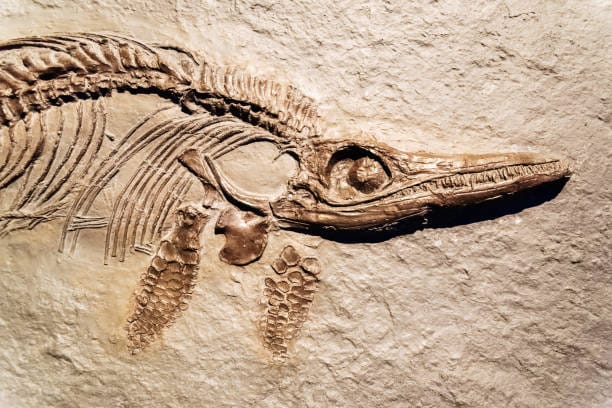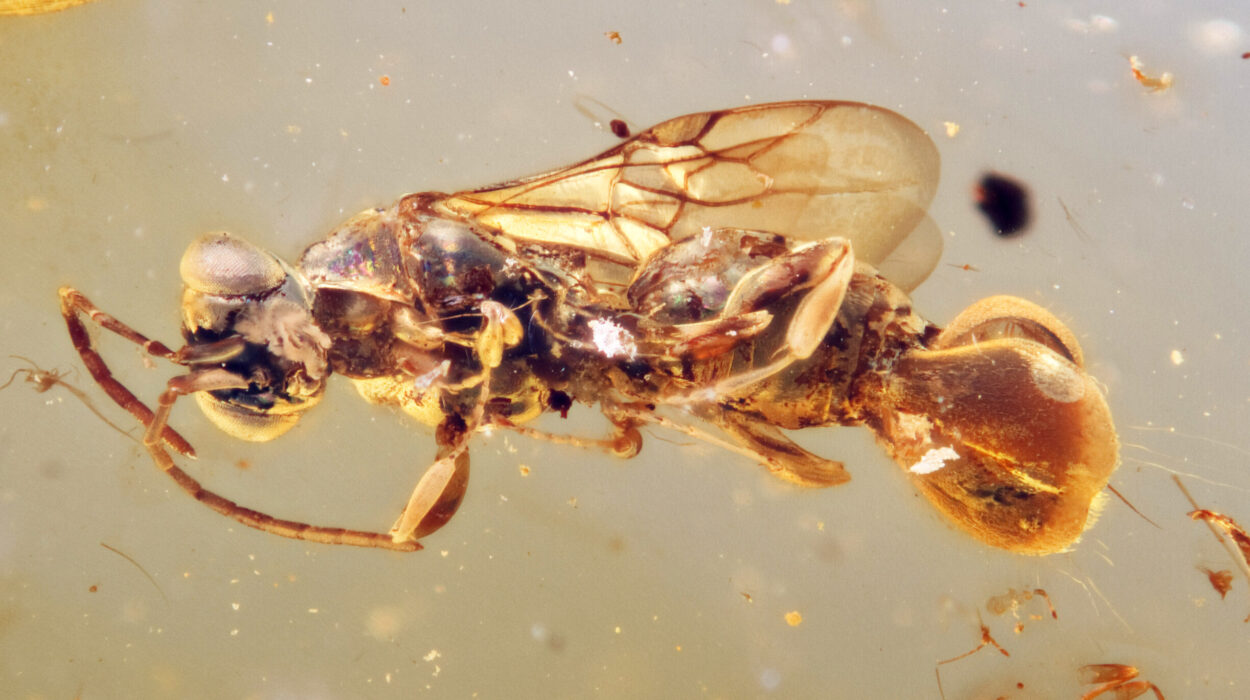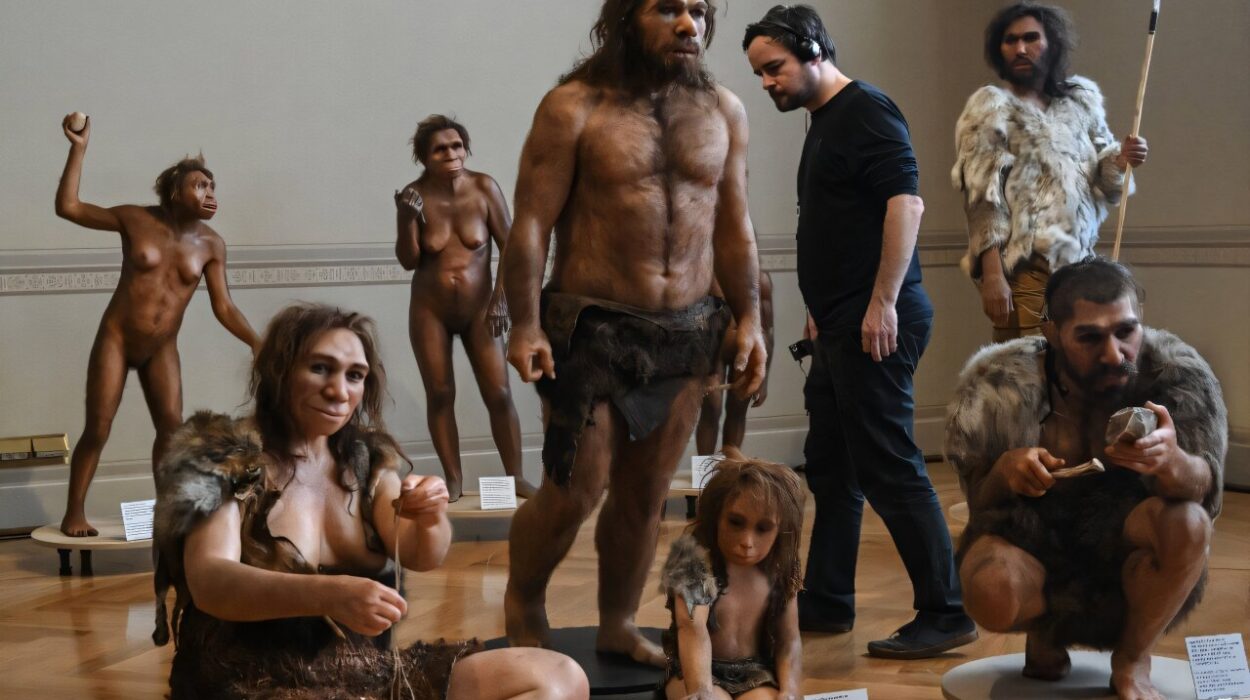Imagine walking through your backyard on a quiet morning. The grass is wet with dew, birds chatter in the trees, and your foot nudges something unexpected sticking out of the ground. It’s not a rock. It’s not a root. It’s something ancient, something strangely smooth yet textured. A fragment of a jaw? A tooth? Or maybe—just maybe—a piece of something that lived millions of years ago.
Most of us think of fossils as treasures buried in remote deserts or locked behind glass in museum halls. We associate them with places like Montana’s badlands, Utah’s red rock canyons, or the arid cliffs of Argentina. We imagine teams of paleontologists with chisels and brushes working in the baking sun, not a curious gardener raking through flowerbeds. And yet, Earth’s deep past isn’t confined to the exotic. It’s under every step we take.
The idea that fossils could be found in your own backyard isn’t just a fantasy—it’s a scientific possibility. The story of our planet is layered beneath the soil we walk on. But understanding where those ancient clues are hidden, and why they appear where they do, requires unraveling the fascinating interplay of geology, time, biology, and chance.
Fossils: Messages in Stone
To understand how fossils could exist beneath a suburban lawn or a forest trail, we need to understand what a fossil really is. Fossils are the preserved remains or traces of organisms from the remote past—plants, animals, bacteria, or fungi that lived long before humans ever appeared. But not everything that dies becomes a fossil. In fact, the odds are astronomically small.
The process of fossilization is delicate and rare. It begins with death—an organism must be quickly buried before scavengers devour it and before the forces of nature scatter its bones or soften its shape. Mud, sand, ash, or silt may smother it, sealing it away from oxygen and decay. Over time, mineral-laden water seeps into the buried remains. Bones turn to stone. Impressions harden. Sometimes even soft tissues leave ghostly outlines in the surrounding rock.
Fossils don’t belong only to dinosaurs. Many are plants, shells, invertebrates, or tiny microorganisms. Some are full skeletons; others are teeth, footprints, or leaf impressions. They are the world’s oldest memories, etched into stone, and left like clues in the earth’s long and unfinished diary.
So if fossils can form anywhere under the right conditions, could your backyard have once been home to an ancient lake, swamp, or sea? The answer lies in the landscape’s history—its geology, its layers, and the lives that once stirred above them.
Every Backyard Has a Past
Whether you live in a bustling city, a quiet countryside, or a mountain village, your land has a geologic story. The ground beneath your feet didn’t always look the way it does now. In fact, most places on Earth have experienced dramatic transformations across the vast stretch of geologic time. Shallow seas once covered what is now Kansas. Tropical forests grew where Antarctica now freezes. Giant ferns once shaded areas now covered in strip malls and highways.
Fossils are often discovered in sedimentary rocks—those formed from layers of sand, silt, and organic material compressed over millions of years. These layers preserve the story of environments long gone: riverbeds, swamps, floodplains, and shallow seas where life once thrived. And in North America, many of these rocks still lie just beneath the surface.
In places like Illinois, Ohio, and Pennsylvania, the land is rich with marine fossils because much of that area was underwater during the Paleozoic Era. Trilobites, ancient corals, and brachiopods can be found in exposed rock, creeks, or even turned up by plows. In the western states, sedimentary basins once home to dinosaurs still yield new discoveries every year.
But even in unexpected places, like backyards, gardens, and roadside gullies, fossils have been unearthed by accident. A curious child digs in clay and finds a shell embedded in stone. A homeowner laying a patio spots a fossilized fern on a slab. These small encounters remind us that Earth’s history is not far away—it’s right beneath us.
Serendipity and the Science of Discovery
Finding a fossil in your backyard isn’t as simple as picking up a stone. But it’s not impossible either. Often, it takes a unique blend of curiosity, timing, and knowledge.
Many of the most famous fossil discoveries have been made not by trained paleontologists, but by amateurs, farmers, or even kids. In 2011, a 10-year-old boy in Michigan discovered a mastodon tooth while walking through his family’s backyard. In 2014, a retired pipefitter in Texas found what turned out to be a 100-million-year-old dinosaur footprint in a dried-up creek. And in 2020, a family in Iowa found a mammoth femur while building a pond.
These moments of discovery are not just luck. They stem from paying attention to the texture of rocks, the patterns of erosion, and the strange shapes that hint at something ancient. One of the most common backyard fossils is the fossilized shell—remnants of marine life that once lived in warm, shallow seas that covered much of North America. In limestone, shale, or sandstone, you may spot the swirls of ammonites, the symmetry of brachiopods, or the concentric ridges of clams long extinct.
Sometimes, these fossils come to the surface during construction, landscaping, or heavy rainfall that washes away topsoil. Creeks and ravines are especially good places to look because flowing water exposes deeper layers. But even freshly turned earth in a backyard garden can reveal unexpected treasures.
The key is knowing what to look for, and more importantly, recognizing what you’ve found.
When a Rock Isn’t Just a Rock
Fossils don’t always look like the gleaming skeletons on museum pedestals. They’re often subtle, encrusted in matrix rock, and worn by time. A fossil may look like a simple stone until you notice a repeating pattern, a curve, a texture too regular to be accidental. Sometimes a fossil is just a fragment—a tooth, a ridge, a hollow imprint left behind when the original structure dissolved.
Shell fossils are common and often the easiest to recognize. In some regions, particularly near ancient seabeds, entire limestone blocks are made up of fossilized marine life. Petrified wood, another backyard treasure, is wood turned to stone over millions of years, preserving the growth rings and bark in incredible detail. In areas where ancient forests once stood, these stony trees lie just beneath the surface.
Even trace fossils—like burrows, root marks, or footprints—can survive the ages, leaving ghostly imprints in hardened sediment. In the right light and with the right eyes, these echoes of movement and life stand out like whispers from deep time.
To someone untrained, these subtle signs might be overlooked. But to someone who knows what they’re looking for—or simply someone willing to wonder—they’re unmistakable.
Legal, Ethical, and Scientific Considerations
If you do find a fossil in your backyard, what should you do?
In many places, private property owners are allowed to keep fossils they find on their land. However, if you live in a protected area, or if the fossil appears to be extremely rare or scientifically significant, it’s wise to contact a local university, museum, or paleontologist. Responsible fossil discovery means balancing curiosity with stewardship.
Some fossils may have cultural importance—especially in areas traditionally inhabited by Indigenous peoples. In such cases, ethical considerations become vital, and consultation with local tribes or historical commissions may be necessary.
There’s also the scientific value to consider. A fossil that seems ordinary to the untrained eye might represent a species never before documented. Every discovery is a puzzle piece that helps reconstruct the bigger picture of life on Earth. Researchers rely on detailed data about the location and context of fossils, so sharing what you’ve found can contribute to human knowledge in meaningful ways.
Fossils as Teachers
Whether you keep your discovery, donate it, or simply photograph it and let it be, fossils offer more than stone—they offer perspective.
Holding a fossil in your hand is like shaking hands with time itself. It’s a moment of connection that transcends our brief human lifespans. That ancient shell, that fern leaf, that jawbone belonged to a world we’ll never see with our eyes—but one we can still understand.
For children especially, backyard fossil hunts can ignite a lifelong love of science. They offer tactile proof that Earth’s story didn’t begin with us—and won’t end with us either. They inspire questions about evolution, extinction, geology, and the vastness of time.
Even for adults, fossils remind us that our world is not static. Continents drift. Oceans vanish. Species come and go. The ground beneath our homes has carried glaciers, oceans, forests, and herds of mammoths. A simple rock can become a portal through which we glimpse the unimaginable past.
Digging Deeper Into Local History
If you’re intrigued by the idea of finding fossils in your own region, a good place to start is learning your local geology. Every place on Earth has a geologic map that shows what types of rocks lie beneath the surface, and from which geologic periods they originate.
Some regions are built atop bedrock from the Cretaceous Period, while others rest on the remains of Devonian seas or Carboniferous swamps. By researching local formations, you can discover what kinds of fossils are most likely to be found where you live.
State geological surveys, university departments, and museums often have public records or even fossil field trip guides. In some areas, organized fossil hunts are available to the public, giving beginners a chance to learn from experts.
You may be surprised to learn that a famous fossil bed is only a short drive away. Or that the hill near your neighborhood school is made of marine shale filled with crinoids. Or that the gravel pit behind your street is a Pleistocene deposit rich with the bones of Ice Age mammals.
Fossils in the Age of Concrete
In our modern world, it’s easy to feel disconnected from the Earth’s history. Concrete, asphalt, and steel have replaced soil and stone. Cities grow upward, not downward. We hurry through life with eyes on screens, not the ground.
And yet, fossils persist. They endure beneath skyscrapers and under soccer fields. They lie silent beneath forests and flow with rivers through farmland. Even in the heart of urban jungles, fossils have been found. Construction crews in Los Angeles have uncovered mammoths. Subway workers in New York have stumbled across extinct whale bones.
These unexpected encounters with deep time remind us that Earth is old, layered, and alive with stories. Fossils teach us to slow down and look closer. To remember that even in a digital age, the stone memories of life endure beneath our feet.
The Magic of Discovery
You may never find a dinosaur tooth in your backyard. But you might find something else—something just as powerful. A sense of wonder. A new way of seeing. A reminder that our planet is not only alive, but deeply ancient, and that its story includes everything that came before us.
Fossils are not just scientific specimens. They are evidence of resilience, transformation, and the continuity of life. They whisper of volcanic islands, sunken seas, and skies filled with creatures lost to time. They remind us that Earth has been many different worlds—and that we are just the latest chapter.
So the next time you step into your backyard, take a moment. Kneel down. Sift through the dirt. Look at the stones not just as objects, but as possible windows into another world. You may not find a fossil every time, but you will always find a deeper connection to the planet beneath your feet.
And that, too, is a kind of discovery.






